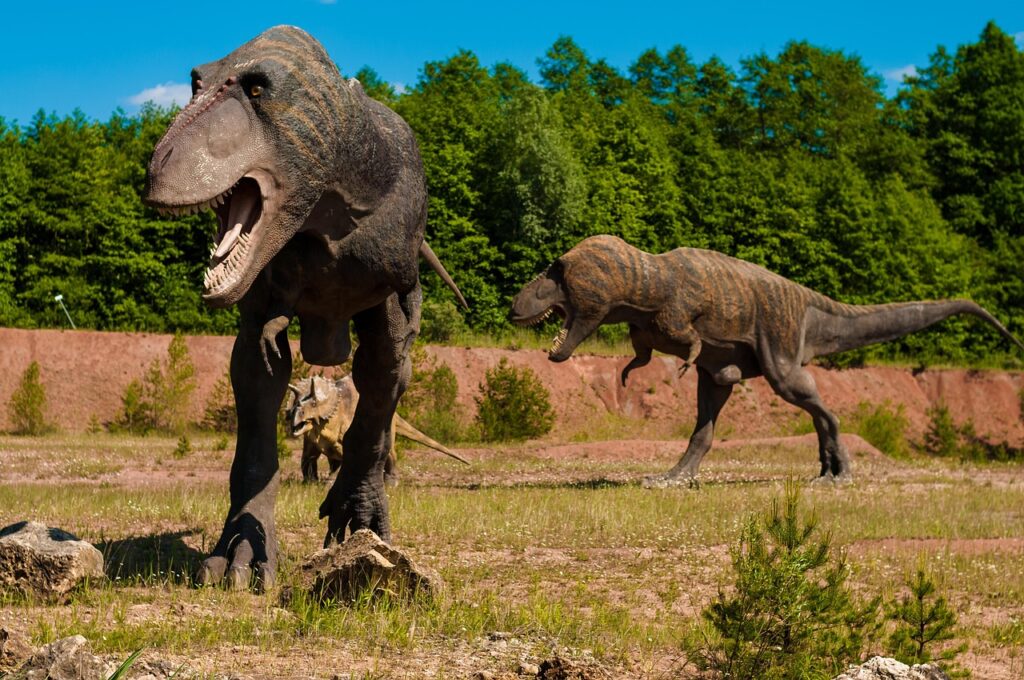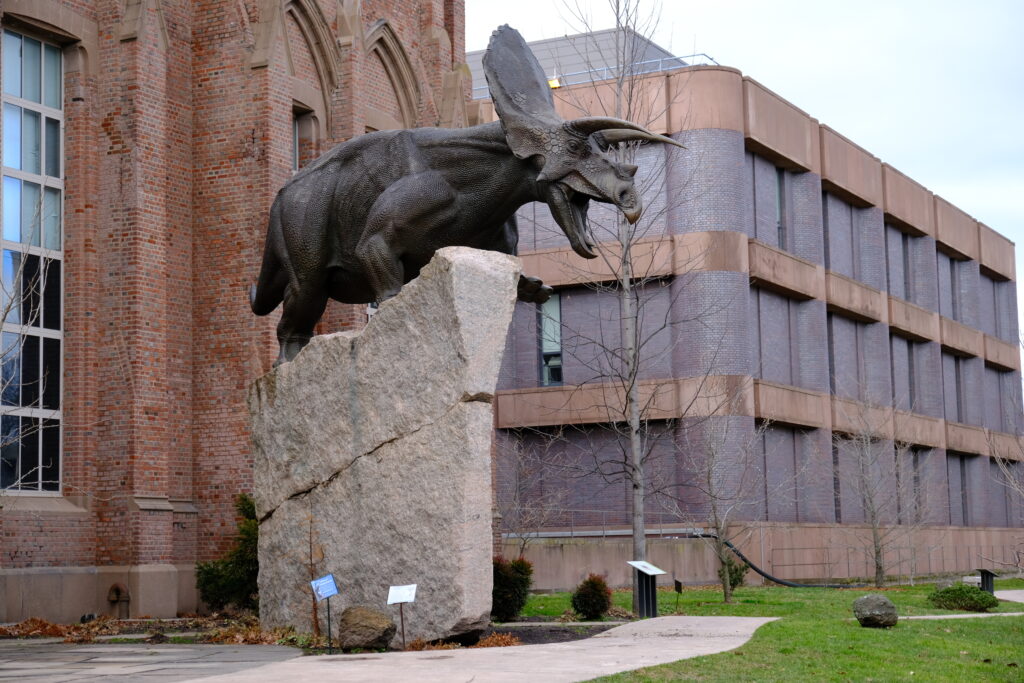Picture this: you’re standing on the shores of an ancient sea, 240 million years ago, when suddenly a creature emerges from the water that looks like someone took a giraffe, stretched its neck to impossible lengths, and gave it flippers instead of legs. This isn’t science fiction – this is Tanystropheus, one of the most bizarre reptiles that ever lived on Earth. With a neck that could reach up to 10 feet long, this prehistoric marine hunter defied every rule of anatomy we thought we knew about vertebrates.
The Neck That Broke All the Rules
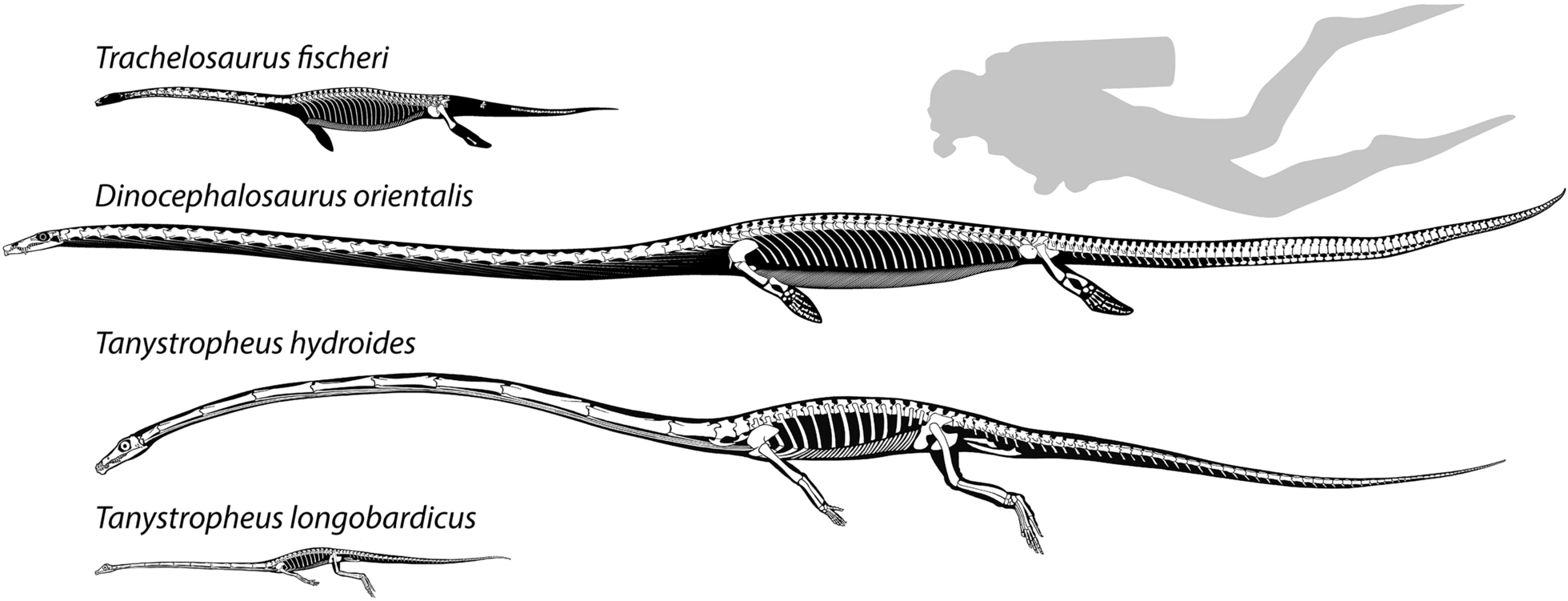
When paleontologists first discovered Tanystropheus fossils in the 1850s, they literally couldn’t believe their eyes. The neck of this creature was longer than its entire body and tail combined – imagine if your neck was three times longer than the rest of you! What made this even more shocking was that this incredible length came from just 13 vertebrae, each one stretched to mind-boggling proportions.
The individual neck bones were so elongated that early scientists thought they were looking at leg bones or ribs. It took decades of careful study to realize they were dealing with cervical vertebrae that had been evolutionarily stretched like taffy. Each vertebra could measure up to 12 inches long, creating a neck that looked more like a flexible fishing rod than anything we see in modern animals.
A Living Fishing Rod in Ancient Seas
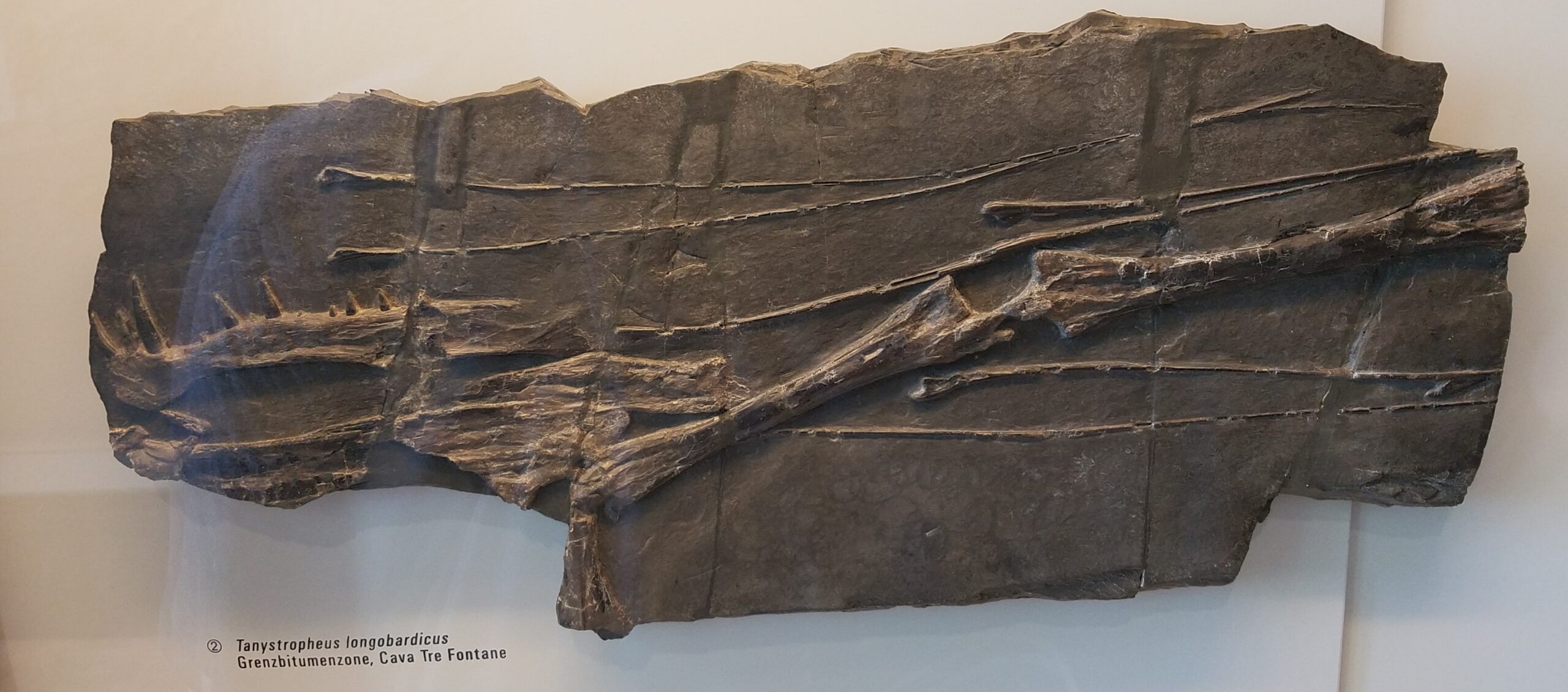
This extraordinary neck wasn’t just for show – it was a precision hunting tool that gave Tanystropheus a massive advantage in the ancient Tethys Sea. The creature could remain motionless on the seafloor or partially submerged, then strike with lightning speed at unsuspecting fish swimming overhead. Think of it as nature’s version of a telescoping fishing rod, but one that could move with the fluidity of a snake.
The neck’s incredible reach meant Tanystropheus could hunt in multiple layers of the water column without moving its bulky body. This stealth approach was crucial for an ambush predator, allowing it to remain hidden while its head searched for prey in completely different areas of the water. It was like having a built-in periscope that could extend in any direction.
Size Matters: From Tiny to Titanic
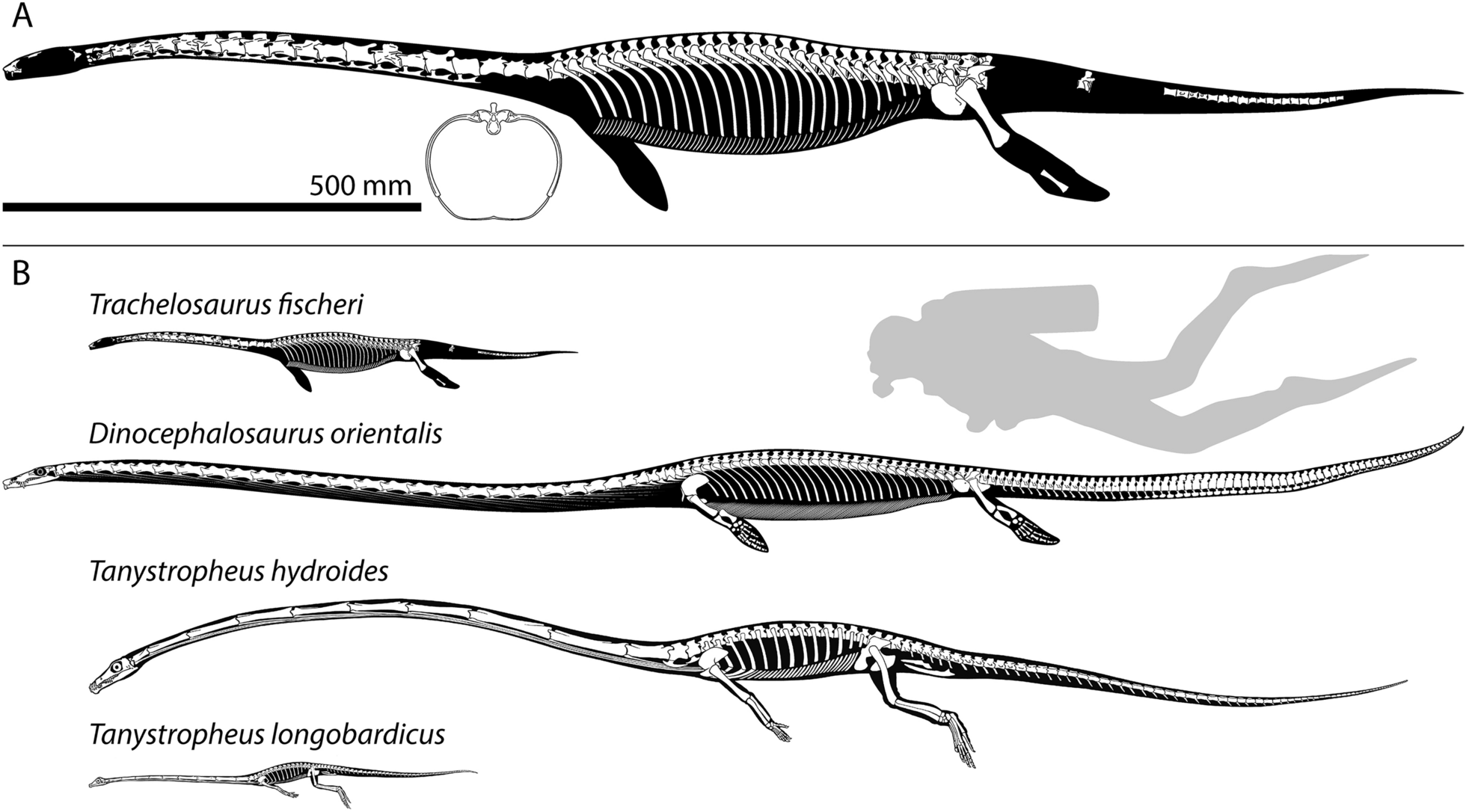
Here’s where Tanystropheus gets even more fascinating – it came in dramatically different sizes that puzzled scientists for years. The smallest specimens were only about 3 feet long, while the giants reached lengths of up to 20 feet. For the longest time, researchers thought these were different species entirely, but recent studies suggest they might represent different life stages of the same animal.
The size difference is so extreme that it’s like comparing a house cat to a tiger. The smaller forms likely lived in shallow coastal waters, darting between rocks and coral reefs, while the massive adults dominated the open ocean. This size variation allowed Tanystropheus to occupy different ecological niches throughout its lifetime, reducing competition between young and old.
The Mystery of the Missing Link
What makes Tanystropheus truly mind-bending is that it represents a completely unique evolutionary experiment. Unlike other long-necked creatures like sauropod dinosaurs or modern giraffes, Tanystropheus achieved its extreme proportions through a method that evolution never tried again. It’s as if nature was testing out a radical new design that was ultimately abandoned.
The creature belongs to a group called archosauromorphs, which are distant relatives of dinosaurs and crocodiles. However, Tanystropheus took such a different evolutionary path that it stands alone in the fossil record. There’s nothing quite like it before or after in Earth’s history, making it a true one-of-a-kind marvel.
Teeth Tell Tales of Ancient Diets
The teeth of Tanystropheus reveal a fascinating story about its lifestyle and diet. The smaller specimens had sharp, needle-like teeth perfect for catching small fish and marine invertebrates. These teeth were designed for gripping slippery prey, with their pointed tips acting like tiny harpoons that could pierce through scales and shells.
However, the giant forms had completely different dental equipment. Their teeth were broader and more robust, suggesting they tackled much larger prey. Some scientists believe these massive adults might have even hunted other marine reptiles, using their incredible neck reach to ambush victims from unexpected angles. The dental evidence paints a picture of a highly adaptable predator that could switch its hunting strategy based on available prey.
Swimming or Wading: The Great Debate
One of the hottest debates in paleontology centers around how Tanystropheus actually moved through the water. Some scientists argue that the creature was primarily aquatic, using its long neck like a snorkel while its body remained submerged. Others believe it was more of a wading animal, standing in shallow water and using its neck to probe deeper areas.
Recent studies of the creature’s bone density suggest it was indeed well-adapted for aquatic life. The bones show signs of being denser than typical terrestrial reptiles, which would have helped with buoyancy control. This evidence supports the idea that Tanystropheus was a skilled swimmer, despite its seemingly awkward proportions.
The Engineering Marvel of Neck Support
From a biomechanical perspective, Tanystropheus shouldn’t have been able to exist. Supporting a neck that long should have required massive muscles and reinforcement structures that would have made the animal impossibly bulky. Yet somehow, this ancient reptile managed to make it work through ingenious evolutionary solutions.
The secret lay in the construction of the vertebrae themselves. Each bone was reinforced with additional ridges and processes that distributed weight more effectively. The neck muscles were arranged in a complex system that provided both strength and flexibility, allowing the creature to move its head with surprising precision despite the enormous length. It’s like nature figured out how to build a crane that could also function as a whip.
Fossil Discoveries That Changed Everything
The most complete Tanystropheus fossils have been found in the Monte San Giorgio region of Switzerland and Italy, a UNESCO World Heritage site that preserves one of the world’s most important Middle Triassic fossil deposits. These discoveries have provided unprecedented insights into the creature’s anatomy and lifestyle, finally solving mysteries that had puzzled scientists for over a century.
In 2020, researchers made a groundbreaking discovery when they found the first complete skull of a giant Tanystropheus. This fossil revealed that the creature had nostrils positioned on top of its head, similar to modern crocodiles, providing strong evidence for its aquatic lifestyle. The discovery also showed that the skull was relatively small compared to the massive neck, creating an even more bizarre appearance than previously imagined.
Life in the Ancient Tethys Sea
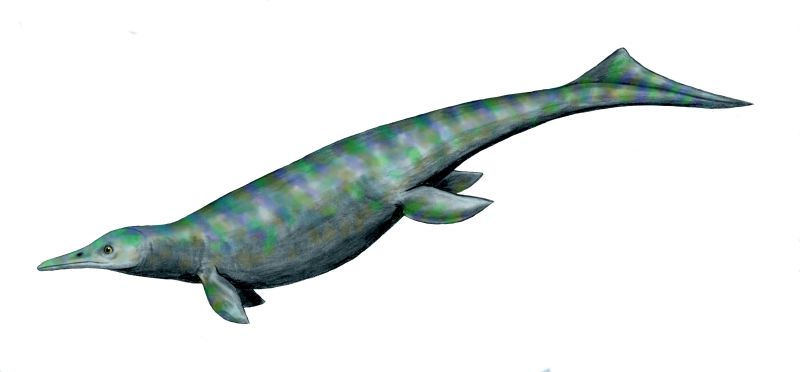
The world of Tanystropheus was dramatically different from today’s oceans. The Middle Triassic period was a time of recovery following the devastating Permian extinction, and marine ecosystems were rapidly diversifying. The Tethys Sea was a warm, shallow ocean filled with coral reefs, marine reptiles, and abundant fish populations that provided plenty of hunting opportunities.
In this ancient seascape, Tanystropheus shared the waters with other bizarre marine reptiles like the dolphin-like ichthyosaurs and the fearsome predatory archosaurs. The long neck gave Tanystropheus a unique advantage in this competitive environment, allowing it to exploit feeding opportunities that other predators couldn’t reach. It was like having a secret weapon in the evolutionary arms race.
Modern Animals That Inspire Comparisons
While nothing alive today matches the extreme proportions of Tanystropheus, several modern animals provide clues about how this ancient reptile might have lived. Sea snakes, for instance, show how elongated bodies can be effective in marine environments, using their length to navigate complex underwater terrain and ambush prey from unexpected angles.
The anhinga, or “snake bird,” offers another fascinating comparison. This modern bird can swim with just its head and neck above water, using its long neck to spear fish with incredible precision. Imagine scaling this behavior up to the proportions of Tanystropheus, and you begin to understand how this ancient predator might have operated in its marine environment.
The Extinction Mystery
Like many specialized creatures, Tanystropheus eventually disappeared from the fossil record, but the reasons for its extinction remain unclear. The end of the Middle Triassic period saw significant environmental changes, including sea level fluctuations and climate shifts that may have disrupted the marine ecosystems where Tanystropheus thrived.
The creature’s highly specialized anatomy, while advantageous in stable environments, may have made it vulnerable to rapid environmental changes. When the ecosystems of the Tethys Sea began to shift, Tanystropheus may have been unable to adapt quickly enough to survive. It’s a reminder that even the most remarkable evolutionary innovations can become liabilities when circumstances change.
Scientific Techniques Reveal Ancient Secrets

Modern paleontologists use cutting-edge technology to unlock the secrets of Tanystropheus that were impossible to discover just decades ago. CT scanning allows researchers to examine the internal structure of fossilized bones without damaging them, revealing details about muscle attachment points, blood vessel pathways, and even brain cavity shapes.
Computer modeling has also revolutionized our understanding of how Tanystropheus moved and hunted. By creating digital reconstructions of the creature’s skeleton and musculature, scientists can test different theories about its behavior and biomechanics. These studies have shown that despite its extreme proportions, Tanystropheus was surprisingly well-balanced and capable of rapid, precise movements.
Legacy in Popular Culture and Science
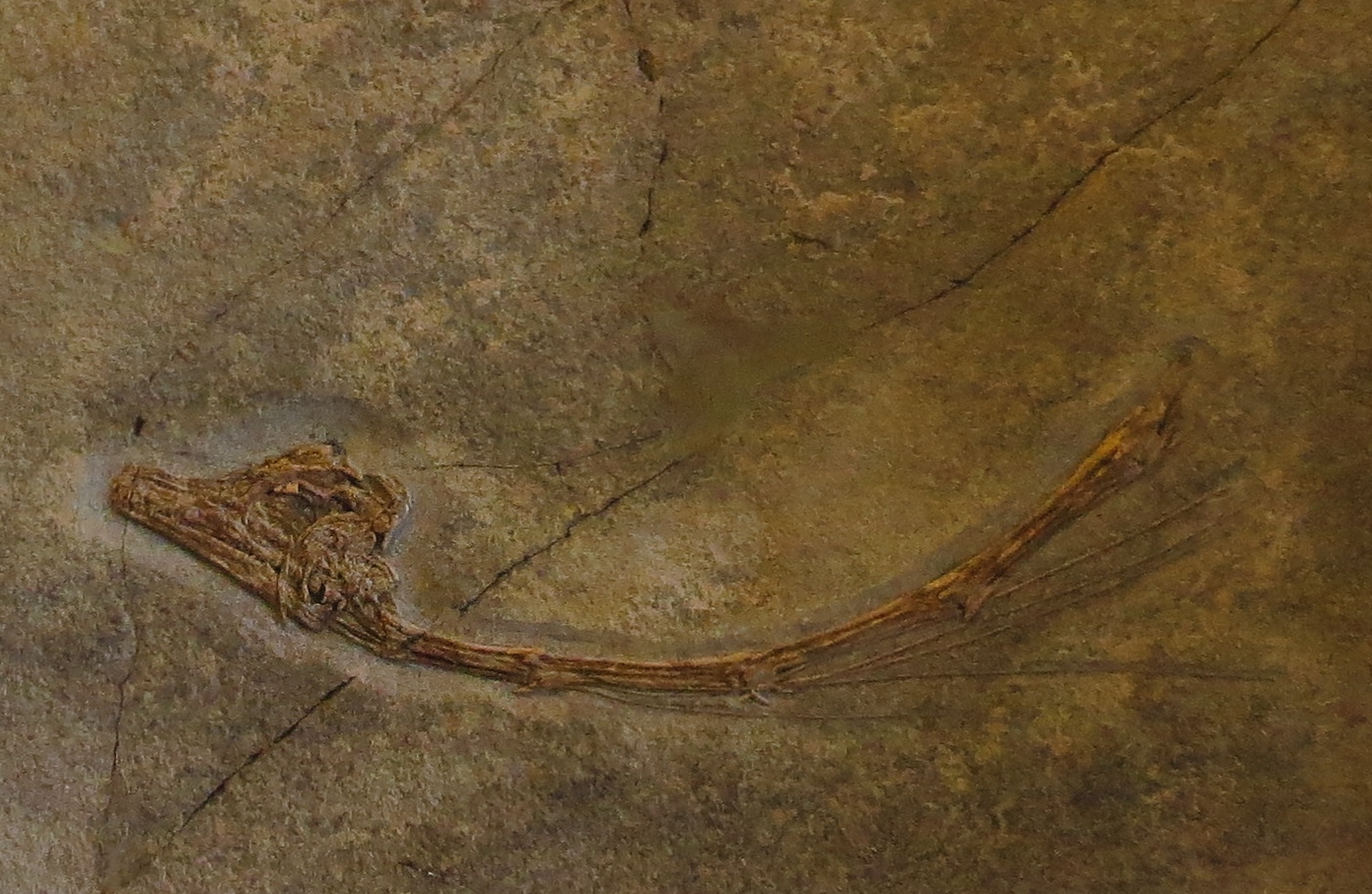
The bizarre appearance of Tanystropheus has made it a favorite among paleontology enthusiasts and has inspired countless artistic reconstructions and museum displays. Its unique silhouette is instantly recognizable, representing one of evolution’s most creative experiments in body design.
Beyond its popular appeal, Tanystropheus continues to influence scientific research into vertebrate evolution, biomechanics, and marine ecology. Studies of this ancient reptile have contributed to our understanding of how extreme body modifications can evolve and function, providing insights that extend far beyond paleontology into fields like robotics and engineering.
What This Ancient Marvel Teaches Us
Tanystropheus stands as a testament to the incredible creativity of evolution and the amazing diversity of life that has existed on our planet. This ancient reptile with its impossible neck challenges our assumptions about what animals can look like and how they can live. It reminds us that Earth’s history is filled with creatures so strange and wonderful that they seem almost fictional, yet they were real animals that successfully survived for millions of years.
The story of Tanystropheus also highlights the importance of preserving fossil sites and continuing paleontological research. Every new discovery has the potential to revolutionize our understanding of ancient life and reveal new chapters in the epic story of evolution. In a world where we’re still discovering new species and uncovering the secrets of ancient ones, who knows what other incredible creatures are waiting to be found?



